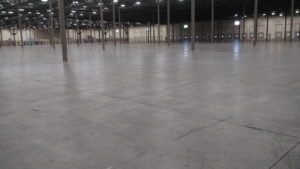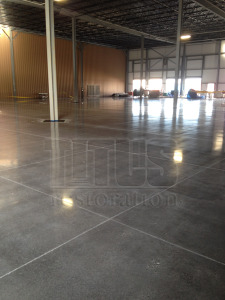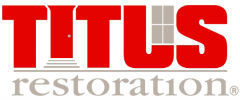With the very large square footage of most distribution centers, budget is everything when it comes to distribution center concrete floors. Sometimes the cheapest option can have undesirable results. Learn about the best options for concrete flooring in distribution centers with our breakdown of pros and cons.
Pros and Cons of Distribution Center Concrete Floors:


- Burned and Sealed Concrete – This is the most common type of concrete floor finish used in the spaces that have hundreds of thousands of square feet. It is a process of “burning” the concrete with steel trowels. It creates an hard top layer that is nearly impenetrable with water. During this process a sealer is also applied to lock in dust and further harden the new concrete. This option is extremely affordable. Often the sealers are just pennies per square foot to install and the extra hard trowelling is not much extra since they are already doing this process to finish the concrete. The problems that can arise, however, are these conditions (with salt-based sealers) are known contributors to sweating slab syndrome. If air and ground temperatures are right and there are extra levels of salt in the concrete, it can cause moisture to accumulate on the surface.
- Joint Sealant – Often overlooked in large square footages, but one of the most necessary options for concrete floors that are exposed to high and heavy traffic is joint sealant. The pros of joint filler are prevention and protection. Joint filler prevents the joints from spalling, deteriorating, and causing major damage to the concrete by creating a seamless transition that is protected from the hard, heavy wheels. Sometimes, joint sealant is installed when the concrete is too green it can crack away from the sides of the joint during expansion and contraction of the slab; however, some cracking is acceptable and still allows the joint filler to properly function, but caution should be taken on installation times.
- Hybrid Polished Concrete Floors – Another option for concrete floor sealing in distribution centers is polished concrete. Polished concrete is often associated with a high-shine, high-cost procedure that is not suitable for industrial use. However, the shine is just a by-product of the refinement process that the concrete undergoes. Concrete refinement is what gives the concrete its tight pores and high cleanability. In addition, a Hybrid Polished Concrete is extremely durable (and chemically hardened) to withstand heavy traffic and abrasions making it ideal for distribution centers. Read more about industrial polished concrete here.
Polished Concrete Contractors for Distribution Center Concrete Floors:
Titus Restoration has been polishing, sealing, cleaning, repairing, and maintaining concrete floors in many different types of facilities across the nation for decades. Our experience in distribution centers is extensive. We understand the need for high volume traffic and can phase work around your operation to keep you focused on what matters most to you. Contact our estimators today for more information on your concrete restoration project.
